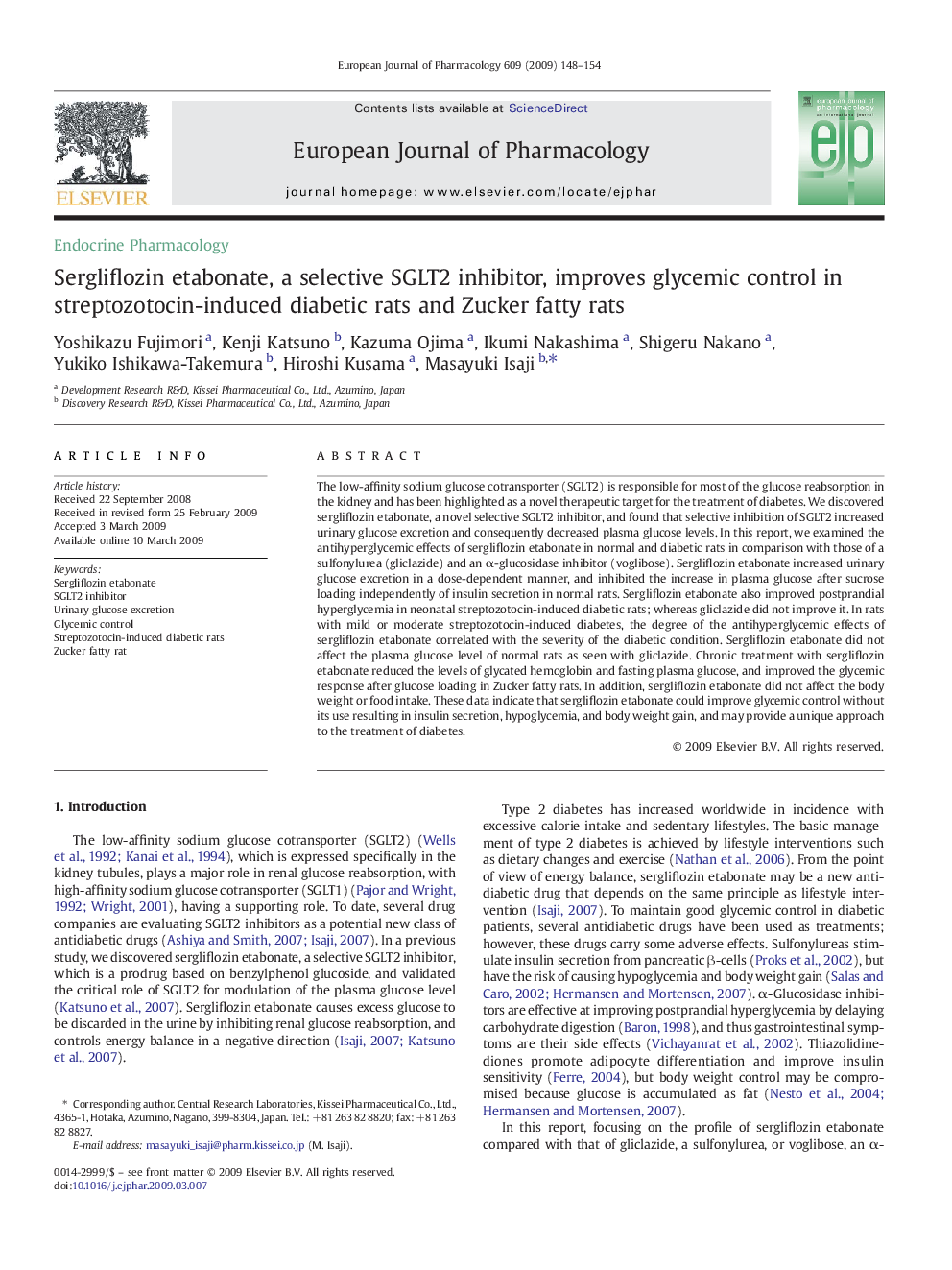| Article ID | Journal | Published Year | Pages | File Type |
|---|---|---|---|---|
| 2534375 | European Journal of Pharmacology | 2009 | 7 Pages |
The low-affinity sodium glucose cotransporter (SGLT2) is responsible for most of the glucose reabsorption in the kidney and has been highlighted as a novel therapeutic target for the treatment of diabetes. We discovered sergliflozin etabonate, a novel selective SGLT2 inhibitor, and found that selective inhibition of SGLT2 increased urinary glucose excretion and consequently decreased plasma glucose levels. In this report, we examined the antihyperglycemic effects of sergliflozin etabonate in normal and diabetic rats in comparison with those of a sulfonylurea (gliclazide) and an α-glucosidase inhibitor (voglibose). Sergliflozin etabonate increased urinary glucose excretion in a dose-dependent manner, and inhibited the increase in plasma glucose after sucrose loading independently of insulin secretion in normal rats. Sergliflozin etabonate also improved postprandial hyperglycemia in neonatal streptozotocin-induced diabetic rats; whereas gliclazide did not improve it. In rats with mild or moderate streptozotocin-induced diabetes, the degree of the antihyperglycemic effects of sergliflozin etabonate correlated with the severity of the diabetic condition. Sergliflozin etabonate did not affect the plasma glucose level of normal rats as seen with gliclazide. Chronic treatment with sergliflozin etabonate reduced the levels of glycated hemoglobin and fasting plasma glucose, and improved the glycemic response after glucose loading in Zucker fatty rats. In addition, sergliflozin etabonate did not affect the body weight or food intake. These data indicate that sergliflozin etabonate could improve glycemic control without its use resulting in insulin secretion, hypoglycemia, and body weight gain, and may provide a unique approach to the treatment of diabetes.
